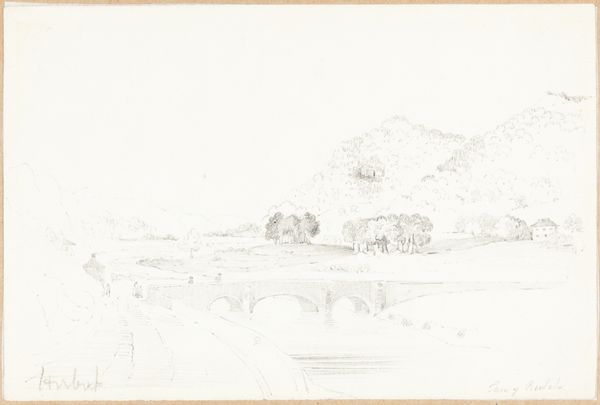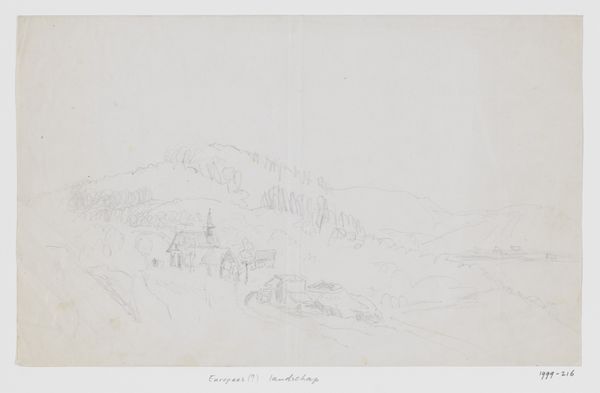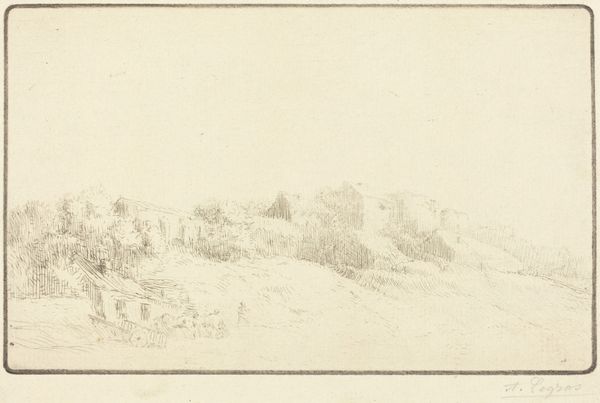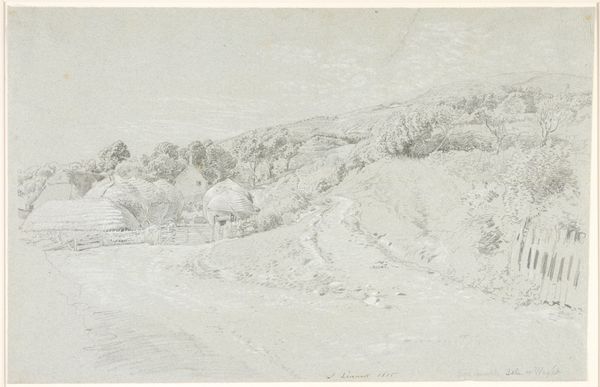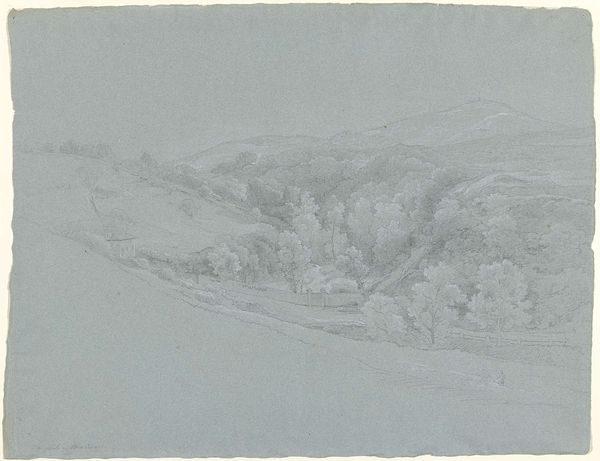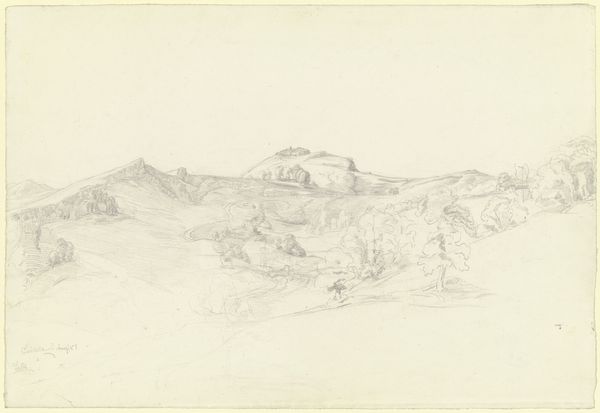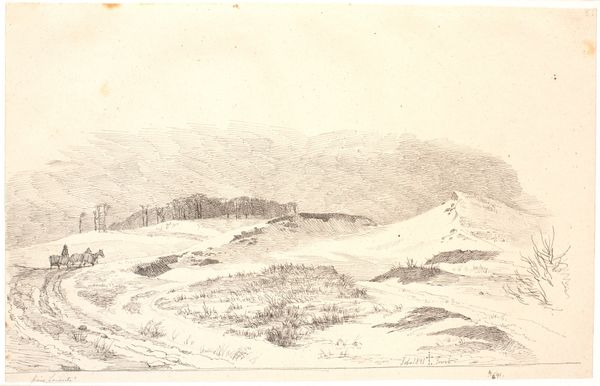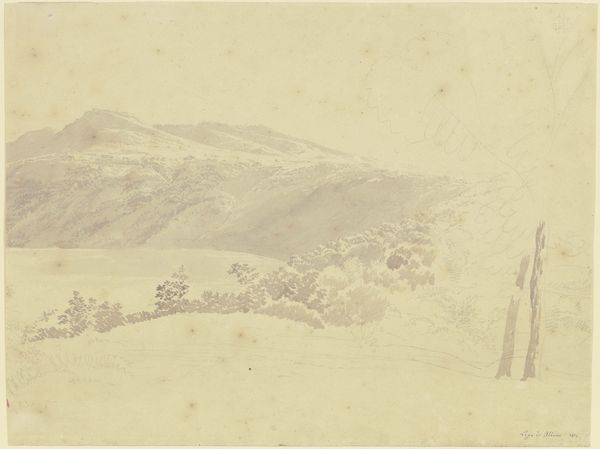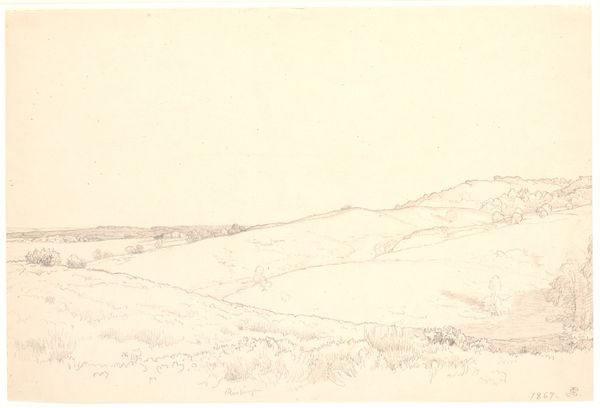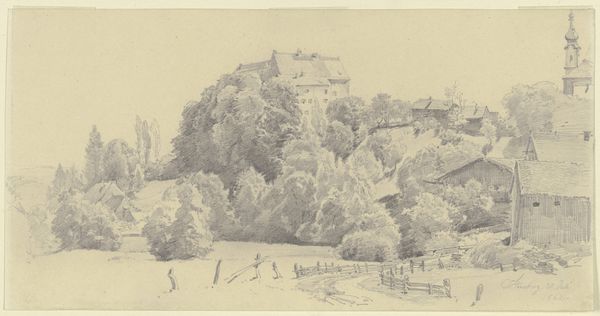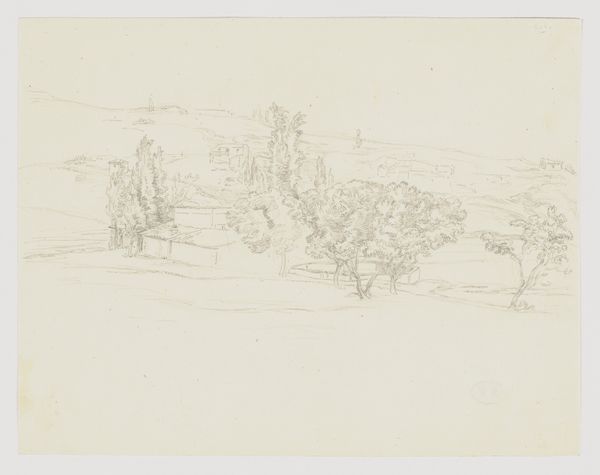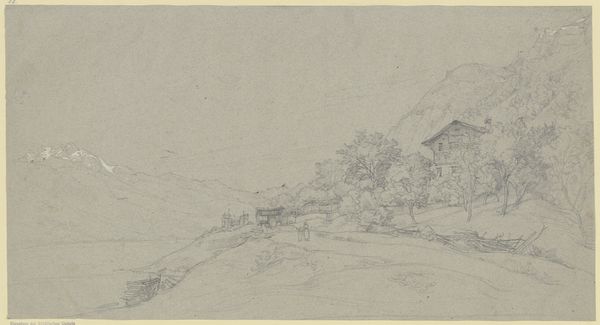
drawing, pencil
#
drawing
#
pencil sketch
#
landscape
#
romanticism
#
pencil
#
cityscape
Dimensions: 249 mm (height) x 449 mm (width) (bladmaal)
Editor: So, this is Wilhelm Marstrand’s "Poussins villa uden for Porta del Popolo," created sometime between 1836 and 1840. It's a pencil drawing, and I'm really drawn to its quiet, almost ethereal quality. All of the marks seem so intentional and delicate, as if the villa is sitting peacefully on the land, observing the landscape in an introspective mood. I see a great deal of attention was devoted to showing how different light hits each plane. What do you notice first? Curator: The interplay between light and shadow is certainly a compelling formal element. Consider how Marstrand uses the pencil to create varying textures; note the cross-hatching and stippling techniques that evoke depth and form. Where does your eye tend to travel, and what compositional choices guide your path? Editor: I think I start with the villa itself, perched prominently on the hill, and then my eye drifts down the slope, following the lines of the terrain. The contrast between the solidity of the building and the more fluid lines of the landscape is interesting. Why is the villa drawn with hard and decisive strokes when all around it, there are soft organic curves and lines? Curator: Precisely. The geometric shapes and stark lines that define the villa juxtapose against the natural, flowing forms of the landscape, drawing the viewers’ attention. The structural composition shows two very distinct approaches. Now, how does Marstrand use negative space, the emptiness surrounding forms, to amplify the drawing’s effect? Editor: I see it mostly in the sky – there’s nothing there. It amplifies the feeling that there’s an air of stillness. The negative space almost flattens the area between the villa and where the viewer is standing. What would be the effect if the artist had chosen a high vantage point with great amounts of foreground detail? Curator: An artist could have rendered that depth through foreshortening. However, the equal emphasis placed on elements distributed across the depth of field serves a specific purpose, creating visual harmony by maintaining the aesthetic integrity of forms rather than making use of dramatic perspective to focus on the most essential part of the drawing. Editor: I learned how to really examine negative space today. It’s given me new thoughts on space, depth and the balance between the villa and its surroundings. Curator: Indeed. Focusing on formal elements allows for a more nuanced understanding of how an artwork operates aesthetically.
Comments
No comments
Be the first to comment and join the conversation on the ultimate creative platform.
